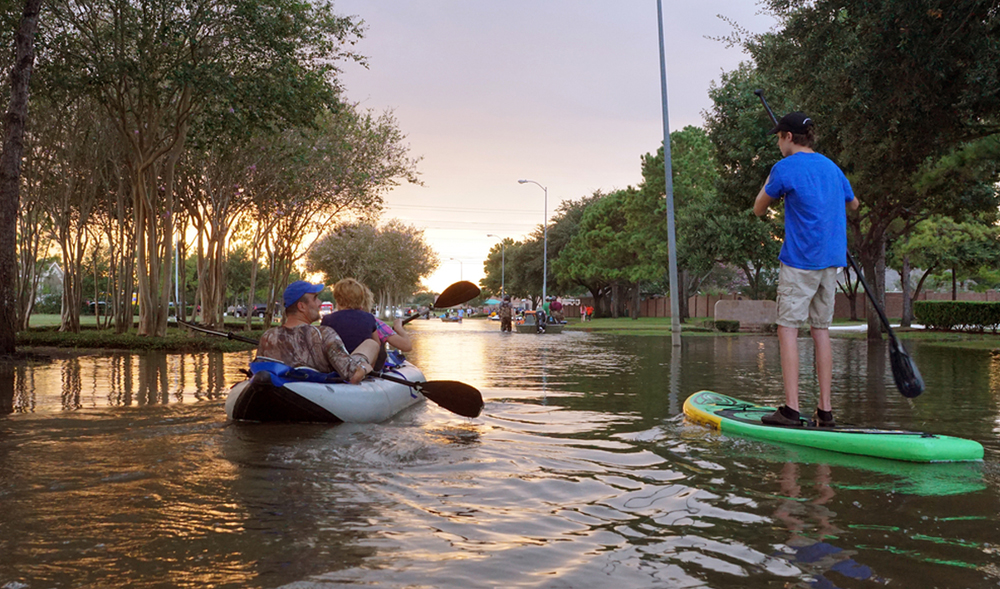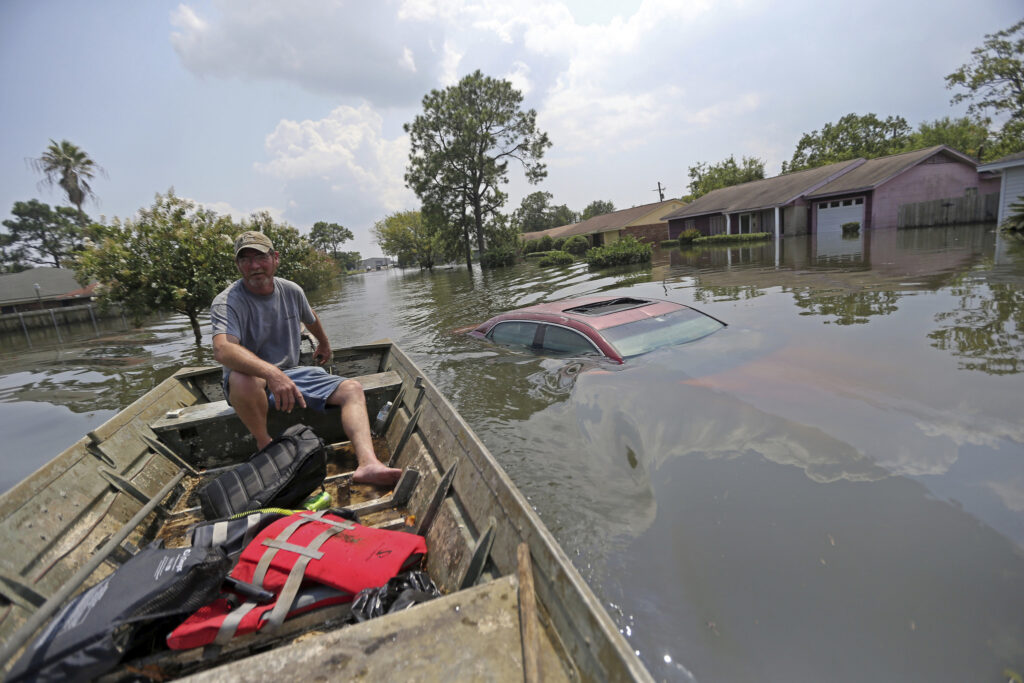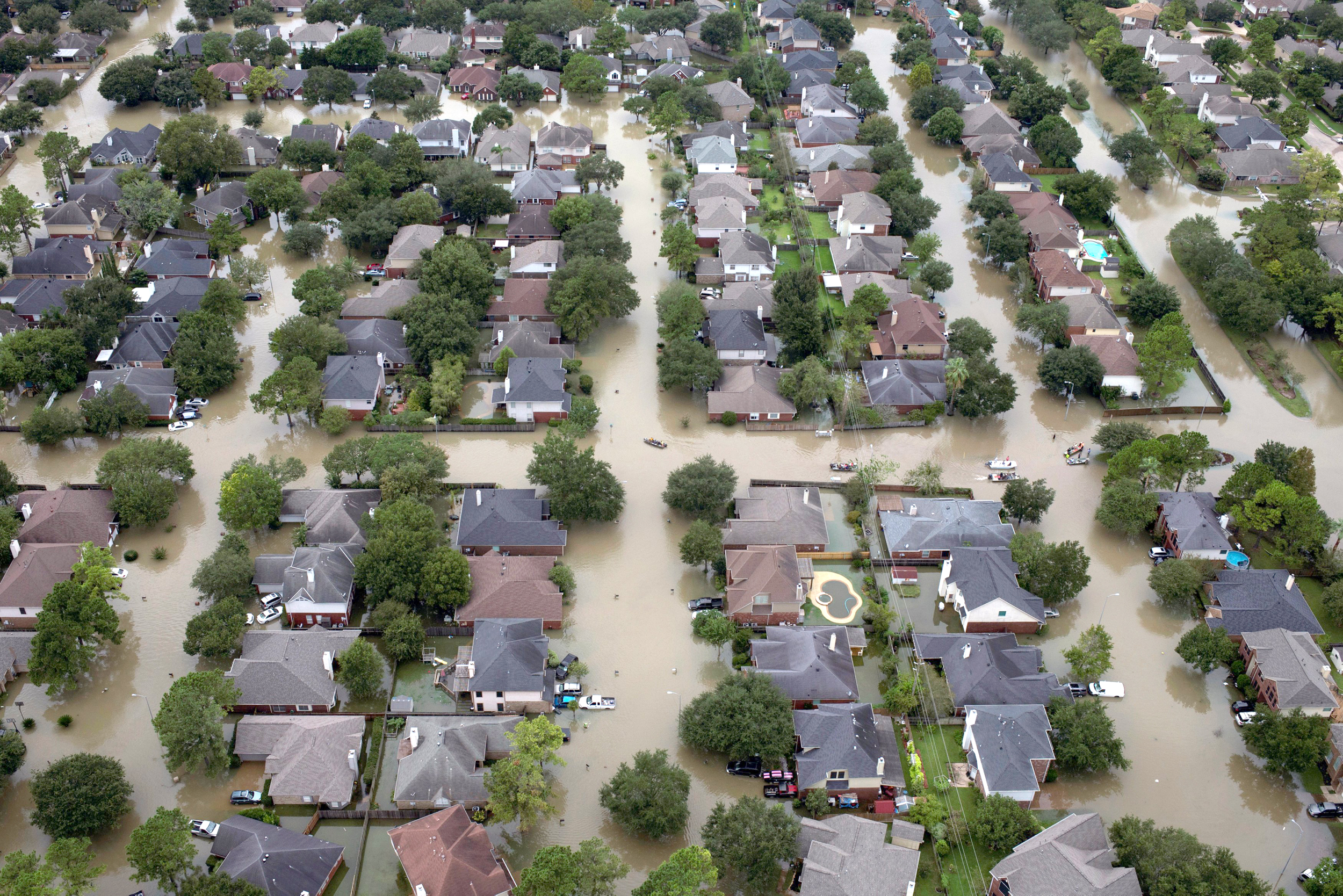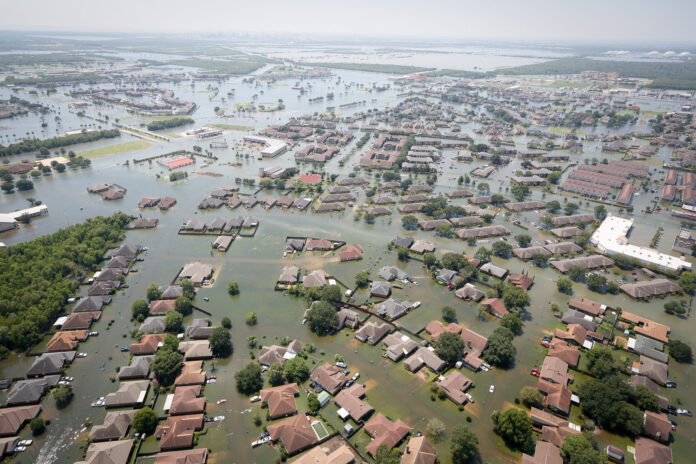Hurricane Harvey has come and gone, but the destruction and devastation will continue for many years for many homeowners who will struggle to rebuild their homes, and their lives, with limited resources and insufficient insurance coverage.
The one thing that many of the flooded homeowners thought they could count on was their property insurance. But many flooded Texans and thousands of other homeowners all across Louisiana, Kentucky, Arkansas and Tennessee will soon realize that they are not covered for the flood damage they sustained to their homes, or personal property.
Standard homeowners insurance policies cover damage from high winds that are associated with a hurricane, but they don’t cover damage from rain or flood waters. In the case of Harvey, many of the damaged homes were not in high risk flood zones – so they were not covered for flooding.
Homeowners and renters insurance would cover damage from wind, but not rain and flooding. Flood insurance is a separate policy that costs about $600 per year, on average, for coverage up to $250,000 in damage to the building and up to $100,000 in damage to the contents. The Federal Emergency Management Agency (FEMA) sets the price and oversees the agencies that issue the flood insurance policies.

Hurricane Harvey is estimated to have caused as much as $37 billion worth of damage in Texans and Louisiana due to the severe flooding, but an estimated 70 percent of that amount won’t be covered by insurance because homeowners were not adequately covered. That equates to about $25 billion in uninsured losses to members of those communities that were recently flooded.
Hurricane Harvey was not a large storm, in size or ferocity, but it did drop a lot of rain. Harvey made landfall on the evening of Aug. 25, with sustained winds of 130 mph, near Rockport Texas, a coastal community close to Corpus Christi. The category 4 hurricane was almost immediately reduced to a category 3 storm once it hit land, and then it jogged north along the coast and stalled over Houston. Although much of the flooding was caused by the approximately 50 inches of rain that fell in some neighborhoods, the local governments rash decision to release water from two reservoirs greatly contributed to the number of homes that got flooded. Many of those homes will not be covered by insurance. Some people have already resorted to crowdfunding as their only prospect for rebuilding their homes.

The national flood insurance program was created by congress in 1968 to provide flood coverage to homeowners who couldn’t get it through the private market. Repeated flood related disasters in recent years have buried the program in debt, and critics say the system has given real estate developers an incentive to build in areas vulnerable to flooding, contrary to it’s aim to reduce the impact of flooding on private and public structures.
But by making flood insurance affordable, FEMA has also almost made itself insolvent.
The federal flood insurance program is now nearly $25 billion in debt due to huge payouts following hurricanes Katrina and Sandy. With another $25 billion in expected loses coming from Hurricane Harvey, FEMA is strained beyond it’s capacity.
Only 12 percent of American homeowners in flood-prone areas were insured against flooding in 2016, down from 14 percent in 2015. Lenders require flood insurance to be purchased if the proposed mortgaged property is in a FEMA flood designated flood area and if the mortgage is backed by a government agency such as Fannie Mae and Freddie Mac. Even if a property is not in a FEMA designated flood prone area, a lender might require flood insurance to be purchased in areas that they consider “moderate” risks.
Property owners who are not required to buy flood insurance usually won’t get it. Carolyn Kousky, an insurance expert at the University of Pennsylvania, has noticed that many people are not buying flood insurance unless it is mandated by their lender. She said, “Nobody’s buying flood insurance outside the federal flood risk areas, particularly where we’re talking about storm water flooding. Even people who figure they should have insurance just to be safe, usually put it off and then never get around to buying it.”
In an effort to force people to pay for flood insurance, even on properties that are owned free and clear and are not required to have it, FEMA has resorted to scare tactics and threats against property owners who opt out of the national flood insurance program. FEMA’s policy on account holders who cancel their insurance or lapse in paying their policy for more than 90 days, or twice in any number days, is that they will no longer be eligible for policy rate discounts. The discounts are necessary to make the insurance affordable. Without the discounts, flood insurance is too expensive for most people to afford.

Following the massive flood surge from Hurricane Betsy, in 1964, along the coasts of Florida and Louisiana, Congress passed the National Flood Insurance Act of 1968. The purpose of the flood insurance act was, “To identify areas of high and low flood hazard and establish flood insurance rates for structures inside each flood hazard area.” The program was amended by the Flood Disaster Protection Act of 1973, which made the purchase of flood insurance mandatory, for any properties backed by federal funds, in areas the Federal Emergency Management Agency determined to be prone to flooding.
In order to appease politicians, and their constituents, the agency agreed to keep rates affordable by having the federal government subsidize any losses, through Congressional appropriations, whenever a catastrophic weather event happens, like a 100 year storm. The U.S. has has multiple 100 year storms in the past decade.
Congress passed the The Biggert–Waters Flood Insurance Reform Act in 2012 to let rates rise to reflect the true flood risk costs associated with living in the designated flood prone areas. The act was meant to increase flood insurance rates by ten times over a 5 year period, but in January 2014, the United States Senate passed the Homeowner Flood Insurance Affordability Act of 2014 – to delay the increase in flood insurance premiums.
Many Americans are learning for the first time that their homes are not covered for flooding. It’s too bad that some of them had to learn this after loosing their home to flooding, and it’s too late to help those who are in the path of Hurricane Irma, a category 5 hurricane, currently headed for south Florida.
Homeowners who have been frightened by the flooding from hurricane Harvey, and who are currently in the path of hurricane Irma won’t be able to get flood insurance in time to same their homes – since FEMA requires a 30-day waiting period on issuing new policies.
Here is a list of what’s covered by flood insurance, and what’s not:
What is covered:
The National Flood Insurance Program policy covers the cost to rebuild, or the actual value of the property (whichever is less). Including $250,000 towards:
Home structure and foundation
Electrical and plumbing
HVAC equipment (air conditioning, furnaces, and water heaters)
Kitchen appliances
Permanently installed carpeting over an unfinished floor
Permanently installed paneling, bookcases, and cabinets
Window blinds
Detached garages (limited to 10% of your home policy)
Debris removal
The National Flood Insurance Program policy for personal property (contents) covers $100,000 towards:
Clothing, furniture, and electronic equipment
Curtains
Window AC units
Portable microwaves and dishwashers
Carpets not covered by your building policy
Washer/dryers
Your freezer and frozen food
Up to $2,500 in valuables, such as art and furs
What is not covered:
Precious metals
Stock certificates
Bearer bonds
Cash
Trees
Plants
Wells
Septic systems
Walkways
Decks
Patios
Fences
Hot tubs
Swimming pools
Boat houses
Retaining walls
Storm shelters
Temporary housing and other living expenses
Post-flood mold damage
Sewer backups
Cars
Loss of income
